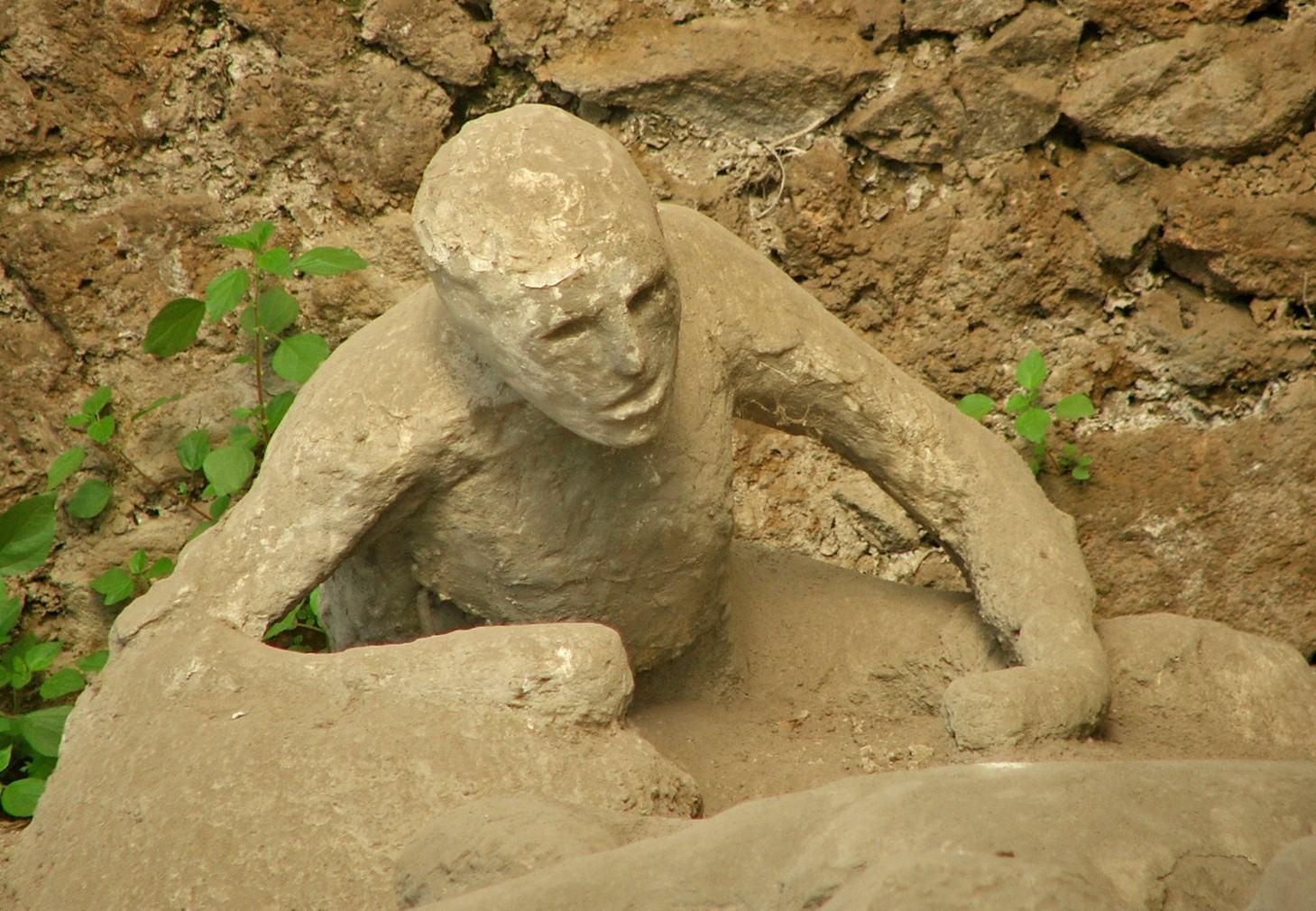
Credit: Daniele Florio from Rome, ITALY, CC BY 2.0, via Wikimedia Commons
Last EarthDate, we talked about the eruption of Mount Vesuvius, which completely covered Pompeii in ash. Within a century, the city was forgotten.
Until the 1500s, when an architect dug into a room. It had once been a brothel, with explicit frescoes on the wall. Considering them inappropriate, he buried them again.
In the 1700s, artifacts were discovered in a vineyard in the volcanic soil above the buried city. So began 250 years of excavation.
In the 1800s, archaeologists discovered strange voids in the pumice. They realized they once contained bodies, frozen in their final positions, and filled them with plaster to cast the human forms.
The city, too, had been frozen in time, yielding a stunning account of Roman civil life.
Pompeii had busy avenues, a marketplace, courts and municipal buildings and a water supply system.
It had architects and engineers, carpenters and jewelers, innkeepers, shopkeepers and over 200 bars and restaurants.
In some, food was even preserved, including bread from more than 30 bakeries. Pompeii even had a 20,000-seat gladiator arena for local and regional spectators.
And with temples for Greek and Egyptian gods, and ads in Hebrew on walls, it seems Pompeii drew travelers from far and wide.
A shame it was destroyed … yet fortunate it was so well preserved.
Background
Synopsis: As geological events from the depths of Mount Vesuvius unfolded relentlessly on the fateful day in AD 79, the human tragedy of the sudden interruption of daily life was recorded in stone, right down to loaves of bread baking in the ovens of Pompeii.
- Aside from Pliny the Younger’s letter, Pompeii, Herculaneum and the surrounding villages were forgotten for 1,500 years.
- In 1599, the city was rediscovered by architect Domenico Fontana during the construction of an underground river-diversion channel.
- While he made note of the discovery, he found sexually explicit frescoes and graffiti that offended the era’s morals, so he buried them again.
- In 1748, a Spanish military engineer named Roque Joaquín de Alcubierre discovered the ancient city beneath a farmer’s vineyard, unearthing many intact artifacts.
- In the 19th century, as archaeologists continued the excavation, they noted unusual voids in the pumice that contained bones.
- They realized that the bones had remained after other human remains had decayed, leaving grisly molds of individuals who had succumbed to the eruption preserved in the volcanic rock.
- They began filling these air pockets with fast-drying plaster, and a couple of days afterward they could chip the pumice away from the plaster to reveal the postures of people at their time of death. Some were found to be crushed by debris, while others were burned or suffocated.
- While some are lying down, others are crawling on the ground. Some are grasping their knees while sitting against walls. An enslaved person and a guard dog were both found straining at their chains, families were huddled together, and one pair were frozen in a final embrace.
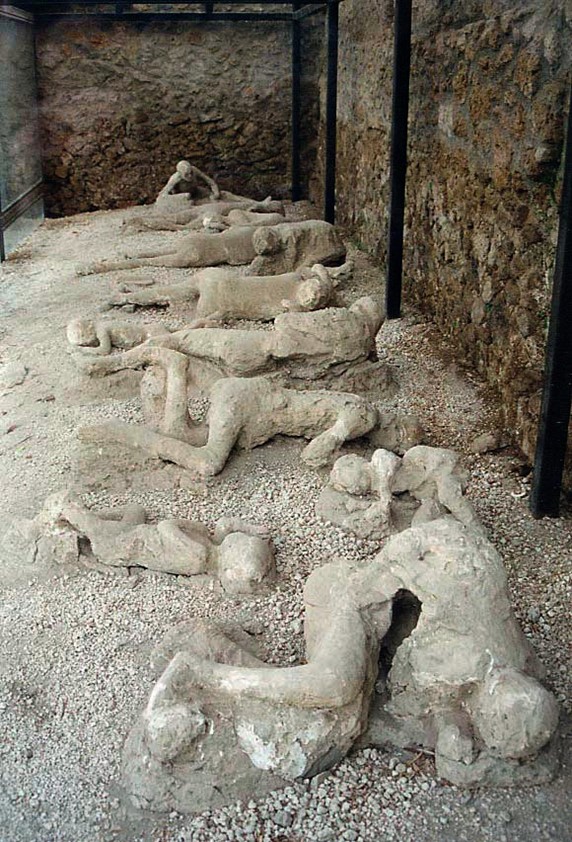
The casts of the corpses of a group of human victims of the AD 79 eruption of Mount Vesuvius, found in the Garden of the Fugitives in Pompeii.
Credit: Lancevortex, CC BY-SA 3.0, via Wikimedia Commons - There are more than 1,150 plaster casts out of the 2,000 victims found in Pompeii, and it is these casts that we see in the familiar pictures of the ancient town.
- While the devastation of Pompeii was tragic, its excavated ruins transport visitors back nearly 2,000 years in time to the active streets of a Roman holiday town.
- Pompeii’s burial was 1,945 years ago (as of 2024).
- The lack of air and moisture preserved an incomparable view into daily life, including the living conditions of the wealthy, middle class, and enslaved class.
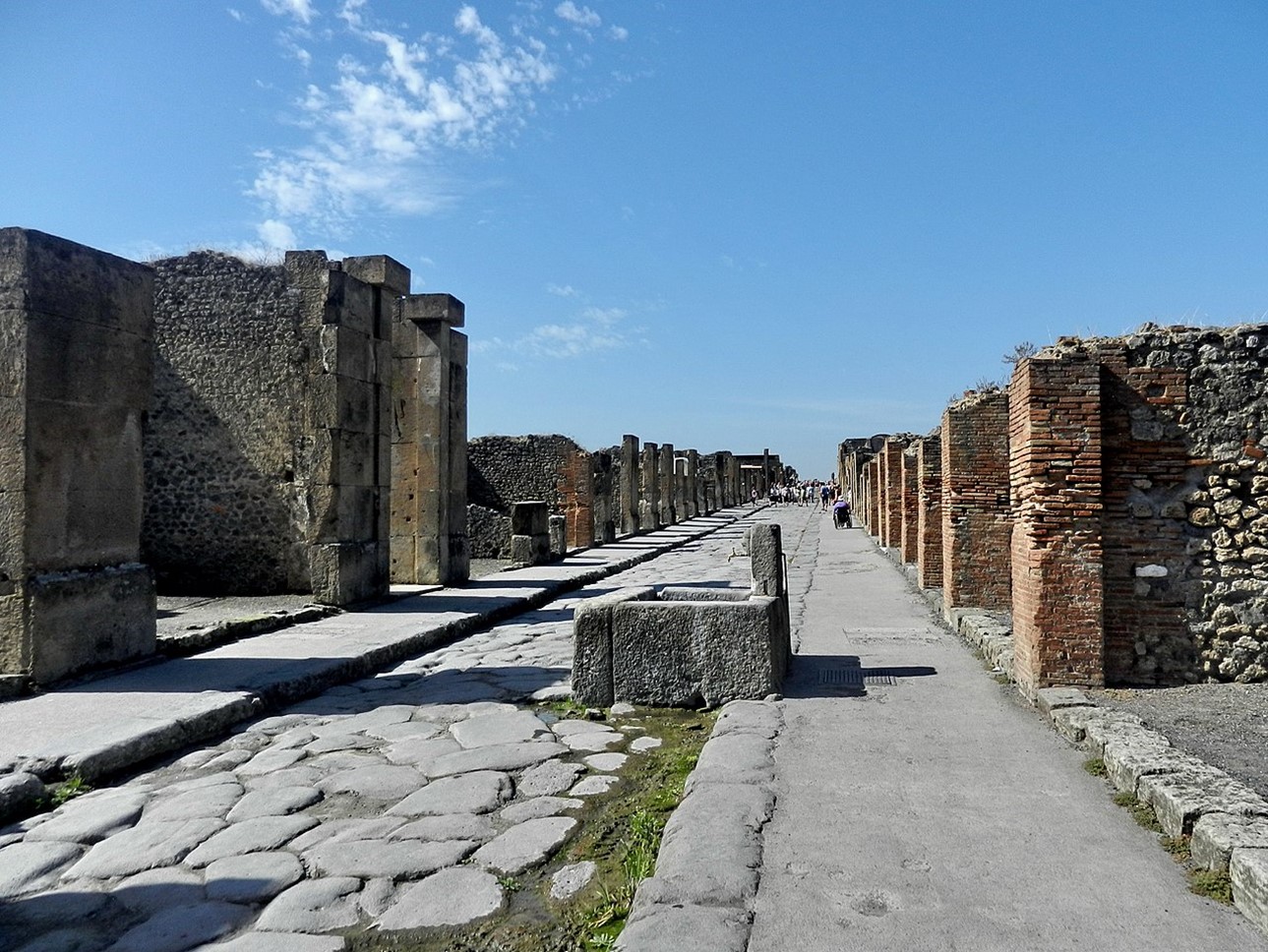
Via dell'Abbondanza, an excavated grand avenue of Pompeii.
Credit: Tanya Dedyukhina, CC BY 3.0, via Wikimedia Commons - Pompeii long had bustling avenues filled with carts and chariots, a thriving marketplace, a forum with courts and municipal buildings and a clean water supply system. However, its streets served as open sewers with raised stepping stones for walkers.
- Evidence of dozens of professions has been found within the city: architects, engineers, carpenters, surveyors, gem cutters and jewelers, actors, innkeepers, shopkeepers, perfume sellers, brothel workers and laundry workers. In one home, a team of painters fled the eruption, leaving a bucket of fresh plaster perched on top of a ladder and 50 pots of paint ready for the job.
- Art history has benefited from a large number of well-preserved murals and frescoes in Pompeiian buildings and homes that illustrate everyday Roman life.
- Pompeii’s amphitheater could hold 20,000 fans for gladiator events featuring animals like lions, boars and mountain goats. This was much larger than the local population, so these events must have catered to regional visitors.
- Pompeii’s two theaters hosted mimes and ancient pantomime, a combination of music and dance that is the ancestor of modern ballet.
- The Temple of Apollo is the most important religious structure in town, but temples dedicated to Roman, Greek and Egyptian gods and goddesses have been excavated as well as some evidence of Judaism. But no evidence of Christianity has yet been found in the city.
- A mural in a government building in Pompeii’s forum shows children in a shaded outdoor setting learning a famous classical Roman poem, Virgil’s Aeneid.
- The first floors of buildings, including mosaics, frescoes, sculptures, wooden furniture and decorative bronze and iron objects and common household objects were well preserved in the ash, while stairwells lead to missing upper stories.
- Graffiti was common on walls to advertise shows, comment on electoral candidates and to leave personal messages for others around town. Some of the graffiti is in Hebrew.
- In some areas, even food was preserved, including grains, legumes, olives, walnuts, almonds, chestnuts, fresh fruit like pomegranates and dried fruits like figs, preserved jars of jam, cheese and 81 loaves of carbonized bread, some still in the ovens of Pompeii’s 30 bakeries.
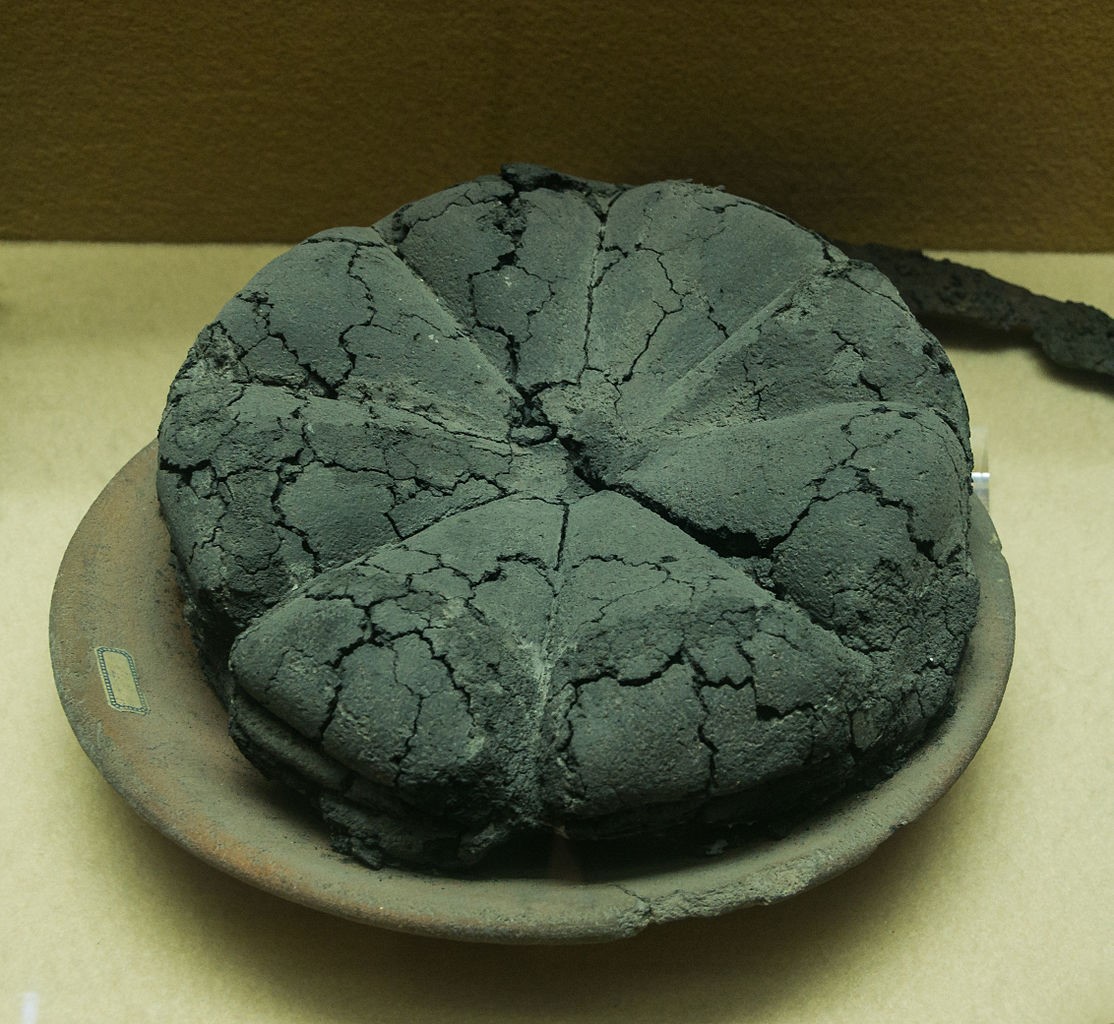
A carbonized loaf of bread, baked in Pompeii in AD 79.
Credit: Jebulon, CC0, via Wikimedia Commons - The residents of Pompeii enjoyed fast-food restaurants as much as modern humans do. Household kitchens were small in the homes of the wealthy and nonexistent in the cramped quarters of the middle class and the enslaved, so everyone enjoyed at least one meal a day from thermopolia, fast-food stalls with counters that opened onto the streets and jars filled with food and drink. All classes ate well in Pompeii.
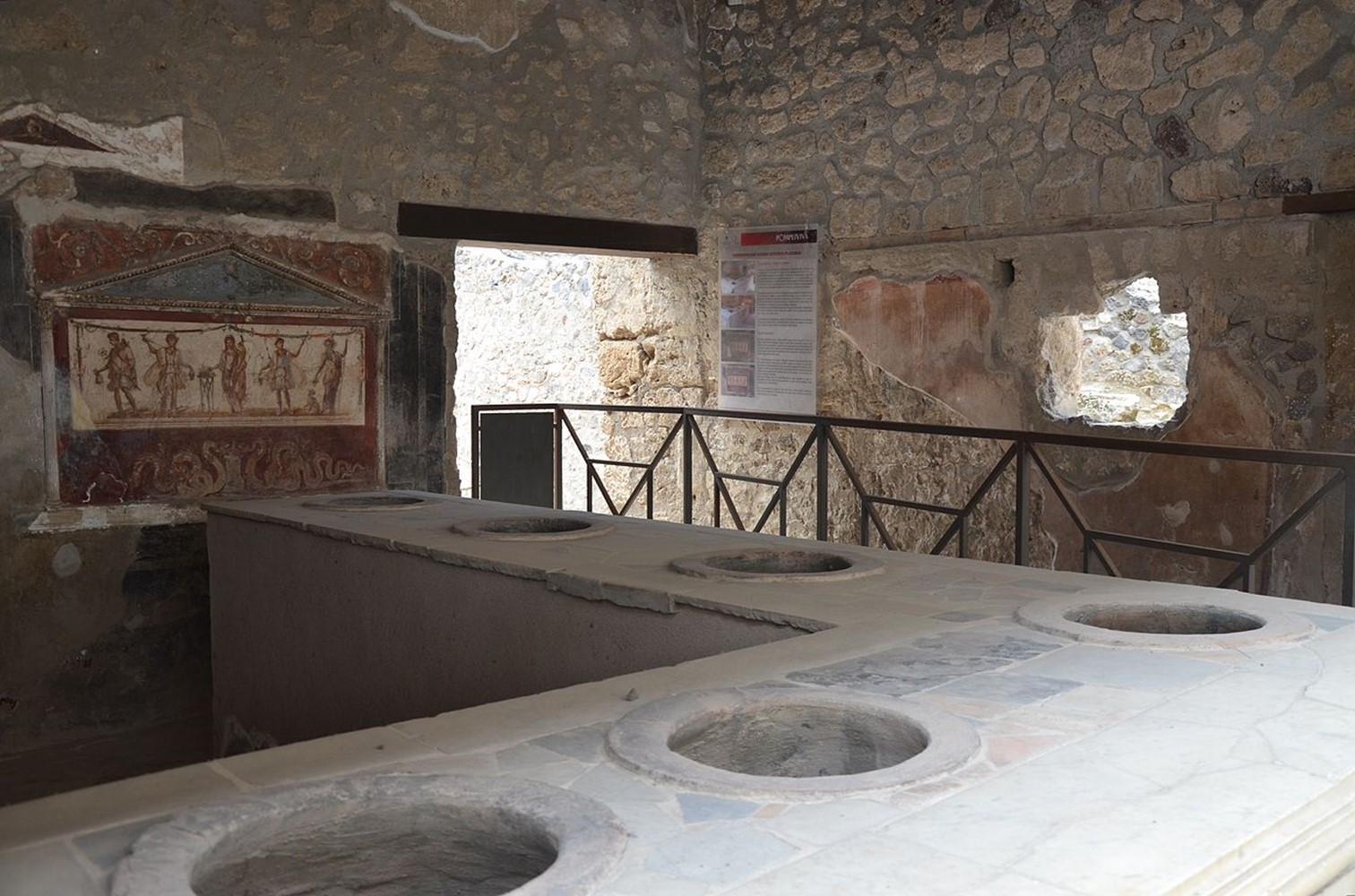
Thermopolium of Vetutius Placidus opening directly onto the south side of the Via dell'Abbondanza, Pompeii. The marble counter has large jars, called dolia, inset into the worktop that were used to hold food. During excavation work, one of these dolia was found to hold a large quantity of coins worth about 585 sesterces (very roughly equivalent to a few thousand dollars), perhaps stashed for safekeeping until the eruption subsided. A stove, positioned on the counter facing the eastern wall, was intended for heating food.
Credit: Carole Raddato from FRANKFURT, Germany, CC BY-SA 2.0, via Wikimedia Commons
- Pompeii has been a popular tourist destination for over 250 years.
- Today it is a UNESCO World Heritage Site, and with as many as 2.5 million visitors per year, it is one of Italy’s most popular tourist attractions.
- The region of Somma-Vesuvio was designated a UNESCO Biosphere Reserve in 1997.

